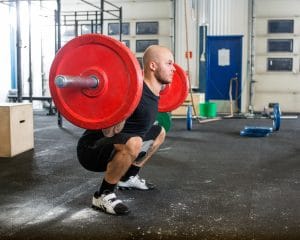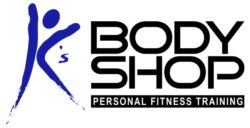Optimizing your squat technique! Whether you’re an elite athlete training for a sport or an elderly adult who wants to maintain an independent lifestyle, being able to squat with correct technique is imperative! With proper squat technique, you’ll maximize the benefits of the exercise while minimizing your chance of injury.

Benefits of Squats
Squatting is a functional movement that people do several times each day whether they are aware of it or not. It’s how you get in and out of a chair, in and out of a car, on and off a toilet, etc. It’s a weight bearing movement that improves muscle strength in the hips and legs, core stability, bone density, and motor control. For an athlete, adding external load to squats does all of that to a much larger degree so that sport specific performance can be improved by increased muscle strength, endurance and power.
Optimal Squat Technique
Squats are only beneficial if you’re doing them correctly, otherwise you risk injury – especially to the knees or spine. Here are a few tips for optimizing your squat technique:
- Place feet approximately shoulder width apart or slightly wider.
- Feet should be pointing straight ahead or turned out slightly (up to 45 degrees) in a natural stance.
- Knees should track directly over toes.
- Heels should remain flat on the floor.
- Torso should remain fairly erect – don’t bend forward at the waist!
- Back should maintain it’s natural lordotic curve.
- Athletes should strive to reach full depth; otherwise stay within pain free range of motion.
Remedial Exercises If You Can’t Squat Properly
If you aren’t able to do all of the points listed above to squat with good form, you’ll need to take some remedial steps to address the specific issues that are preventing you from squatting properly. This may or may not be possible depending on the issue. For example, I’ve had a few clients over the years with fused ankle joints – doing a full squat is simply not an option because the ankle cannot dorsiflex. No amount of stretching will change that – you simply have to respect the restriction and find other alternatives to the traditional squat.
For the rest of you, the first step is to figure out why you’re having trouble. Poor mobility at the ankle or hip and poor core stability are common primary culprits. Previous injuries to the spine, hips, knees or ankles may affect mobility, strength, and motor control. Many older folks are dealing with arthritis or joint replacements in addition to poor strength or endurance. Since the reasons are many and varied, so will be the remedial exercises needed to get you up to snuff. Instead of just guessing, have an assessment done by a qualified professional and figure it out 🙂
Reference:
Comfort, P. & Kasim, P. (2007). Optimizing Squat Technique. Strength and Conditioning Journal, 29(6), 10-13.
